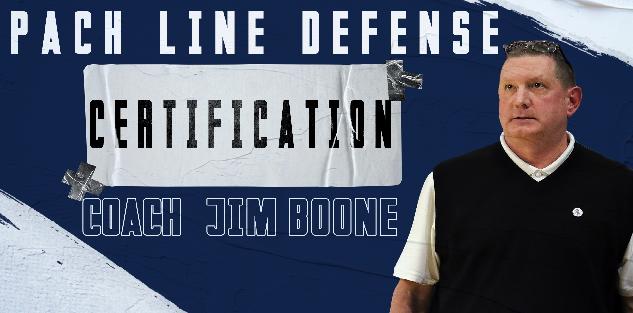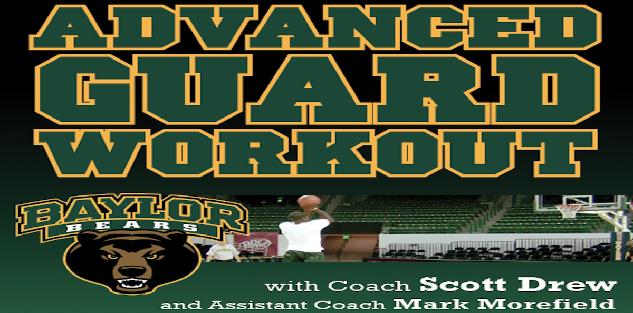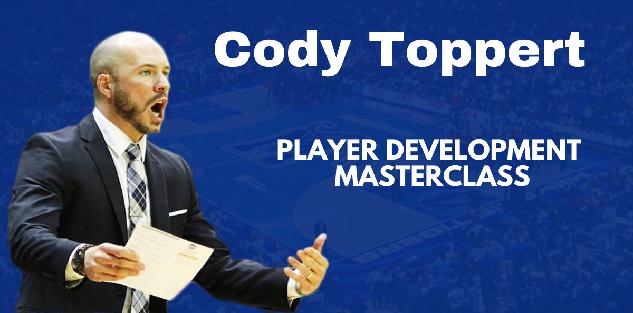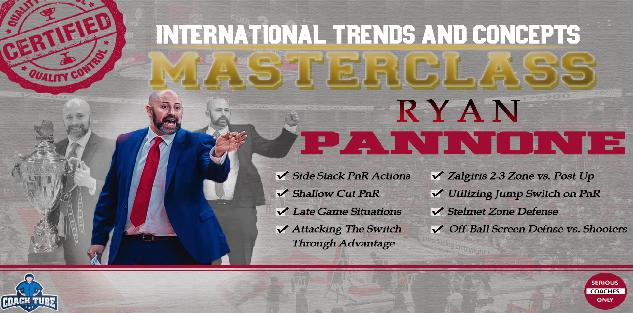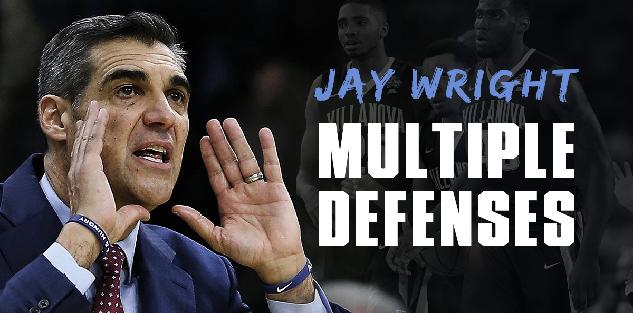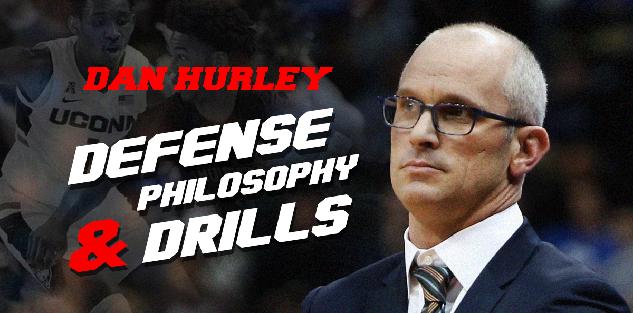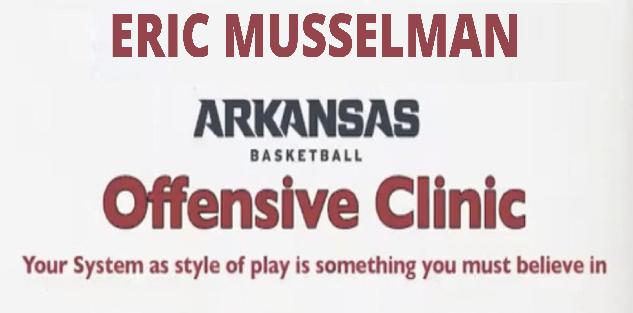Featured courses
- Two Great Game Situational Workouts For the Basketball Offseason by Grant Young
- Two Reads Basketball Players Must Understand Before Executing the Ball-Screen by Grant Young
- Two of LSU Coach Kim Mulkey’s Game-Winning Inbounds Plays by Grant Young
- Three Effective Early-Season Defensive Basketball Drills by Grant Young
- Four Essential Tips For Basketball’s 1-3-1 Zone Defense by Grant Young
- Four Zone Defense Drills to Strengthen Your Team by Grant Young
- How to Beat the Three Most Common Pick and Roll Coverages by Grant Young
- Two Drills to Improve Shooting at the Start of the Basketball Season by Grant Young
- Core Basketball Principles That Dallas Mavericks Coach Sean Sweeney Teaches by Grant Young
- Three Competitive Shooting Drills For Your Basketball Team by Grant Young
- How To Teach The ‘I’ Generation of Basketball Players by Grant Young
- Three Elite Drills to Begin a Basketball Practice With by Grant Young
- How to Build a Championship-Winning Basketball Team Culture by Grant Young
- Two of Texas Women’s Basketball Coach Vic Schaefer’s Tips For Team Culture by Grant Young
- Atlanta Dream WNBA Coach Brandi Poole’s Four Sets for Secondary Offense by Grant Young
- NC State Basketball Coach Brett Nelson’s 4 Crucial Point Guard Qualities by Grant Young
- Kentucky Coach Mark Pope’s Five Guard Rules For Offense by Grant Young
- McNeese State Basketball Coach Will Wade’s 4 Core Pillars by Grant Young
- 4 Tips To Instantly Improve Your Free Throw Shooting by Tyler Linderman
- Assemble a Championship-Caliber Basketball Rotation by Brandon Ogle
- Two of UConn Coach Dan Hurley’s Key Defensive Drills by Grant Young
- Four Post Moves All Basketball Forwards Should Have In Their Bag by Grant Young
- Four of Baylor Coach Nicki Collen’s Midseason Pick and Roll Adjustments by Grant Young
- WNBA Legend Sue Bird’s Two Tips For Attacking on Offense by Grant Young
- Houston Coach Kelvin Sampson’s Three Keys for Building a Basketball Program by Grant Young
- Two of Tom Izzo’s Top Michigan State Defensive Drills by Grant Young
- Four of Olympic Gold Medalist Coach Mechelle Freeman’s Relay Race Strategies by Grant Young
- Three Key Strategies Will Wade Uses to Build a Dominant Team by William Markey
- Five UConn Huskies Men’s Basketball Plays That You Can Use by Grant Young
- Three Tips for Maintaining Team Culture at the End of a Basketball Season by Grant Young
- Three Dribble Drive Motion Drills to Teach Your Basketball Team by Grant Young
- Three Dribbling Drills For Non-Primary Ball Handlers by Grant Young
- Four Advanced Ball Handling Drills For Basketball Guards by Grant Young
- Three Tips to Sharpen Your Post Player’s Footwork in Basketball by Grant Young
- These Three Pick and Roll Drills Are Crucial For Any Ball Screen Offense by Grant Young
- Three Closeout Drills to Improve Basketball Shooting Defense by Grant Young
- Three Tips to Perfect the Packline Defense in Basketball by Grant Young
- Four Keys to Executing the Read and React Offense in Basketball by Grant Young
- Three Tips to Develop Elite Basketball Shooters by Grant Young
- Three Crucial Keys to Executing the 5 Out Offense in Basketball by Grant Young
- These Three Offensive Sets Will Help You Beat Any Zone Defense by Grant Young
- Three Transition Basketball Drills To Play With More Pace by Grant Young
- Three 5 Out Offense Drills Any Basketball Coach Can Use by Grant Young
- Four Vital Techniques for a Motion Offense in Basketball by Grant Young
- Three Baseline Inbounds Plays To Win Your Basketball Team Games by Grant Young
- Four Drills For Sharpening the European Ball Screen Offense by Grant Young
- Three Positioning Tricks For a Basketball Zone Offense by Grant Young
- Three Rules to Perfecting Basketball's Lock Left Defensive System by Grant Young
- UCLA WBB Coach Cori Close’s Two Keys to Winning the Mental Game by Grant Young
- Four of Alabama Coach Nate Oats’ Favorite Basketball Drills by Grant Young
- Three Ways To Turn Transition Offense in Basketball Into Points by Grant Young
- Three Drills to Master Basketball's Pack Line Defense by Grant Young
- Three Transition Defense Drills to Halt Fast Breaks by Grant Young
- Four Offensive Rebounding Drills to Win Second Possessions by Grant Young
- 4 Defensive Technique Drills from Boston Celtics Assistant Coach Brandon Bailey by Marek Hulva
- 5 Drills to Improve Ball Handling by Tyler Linderman
- 13 FUNNY BASKETBALL GIFS by Alex
- BASKETBALL SPEED AND AGILITY: 8 QUESTIONS FOR COACHTUBE EXPERT RICH STONER by Jaycob Ammerman
- Defensive Strategies for Basketball by Ryan Brennan
- 4 Keys To Turning Your Program Into Championship Contender By Dallas Mavericks Coach Sean Sweeney by Marek Hulva
- 5 Components to Creating a Winning Basketball Program by Justin Tran
- Guide to Becoming a Lethal Scorer in Basketball by Justin Tran
- Zone Defense In the NBA Eastern Conference Finals by James Locke
- Mastering Court Mobility: Tips for Effective Movement in Basketball by Justin Tran
- 5 Basketball Shooting Drills: How to Develop a Sharpshooter by James Locke
- 6 Points of Emphasis for a Successful 5 Out Offense by Jaycob Ammerman
- Effective and Efficient Methods to Practice During the Basketball Season by Justin Tran
- Three Great Passing Drills From a Basketball Coaching Legend by Grant Young
- 7 Principles For Perfecting the Princeton Offense in Basketball by Grant Young
- How to Replicate A Modern NBA Offense by Grant Young
- Three Great Two-Ball Dribbling Drills For Basketball Development by Grant Young
- Two Rebounding Drills to Win Your Basketball Team Championships by Grant Young
- How to Improve Your Basketball Team’s Defense With the Shell Drill by Grant Young
- How Baylor Basketball’s Scott Drew Develops Elite Guard Play by Grant Young
- Off-Ball Movement Tips and Strategies: Lessons From the NBA Finals by James Locke
- Player Development: Scott Drew’s Tips for Producing NBA Guards by James Locke
- How to Execute a Spread Offense in Basketball by Grant Young
- Four Quality Quotes From Four Final Four Coaches by Grant Young
- A Guide to the Pack Line Defense by Alex Martinez
- 3 Defensive Build Up Drills to Improve Team Basketball Defense by Grant Young
- Battle of Two Great Coaches: Best Plays from the NBA Finals Contenders by Justin Tran
- 10 Creative Ways Athletic Programs Can Use a Video Board to Raise Money by Coach Williams
- How to Use 3 on 3 to Improve Your Basketball Team by Grant Young
- How to Defend the Pick and Roll by Grant Young
- Mastering Basketball Defense: Techniques, Drills, and Strategies for Success by Justin Tran
- Three Tips From The Coach Who Developed Giannis Antetokoumnpo by Grant Young
- 2023 NBA Draft: Skills and Technique from Top Prospects by Justin Tran
- From College to the Pros: Transitioning the Dribble Drive Offense by Justin Tran
- Positionless Basketball: Redefining Roles on the Court by Justin Tran
- Revolutionize Your Offense: Proven Concepts to Elevate Your Basketball Game by Justin Tran
- 5 Essential Fastbreak Drills Every Basketball Coach Should Know by James Locke
- How to Run a Circle Offense in Basketball by Grant Young
- Game-Changing Strategies: ATO Plays in the EuroLeague and Olympics by Justin Tran
- How to Stand Out at Basketball Tryouts by Grant Young
- How to Improve Your Basketball Team’s Transition Defense by Grant Young
- Indiana Fever GM Lin Dunn’s Two Keys For Women’s Basketball Coaches by Grant Young
- Strength Training Strategies Every Basketball Player Should Have by Grant Young
- A WNBA Basketball Coach’s Four Priorities In Transition Defense by Grant Young
- Three Adjustments to Make When Your Basketball Offense Isn’t Working by Grant Young
- Three Pillars to Applying Defensive Pressure on the Basketball Court by Grant Young
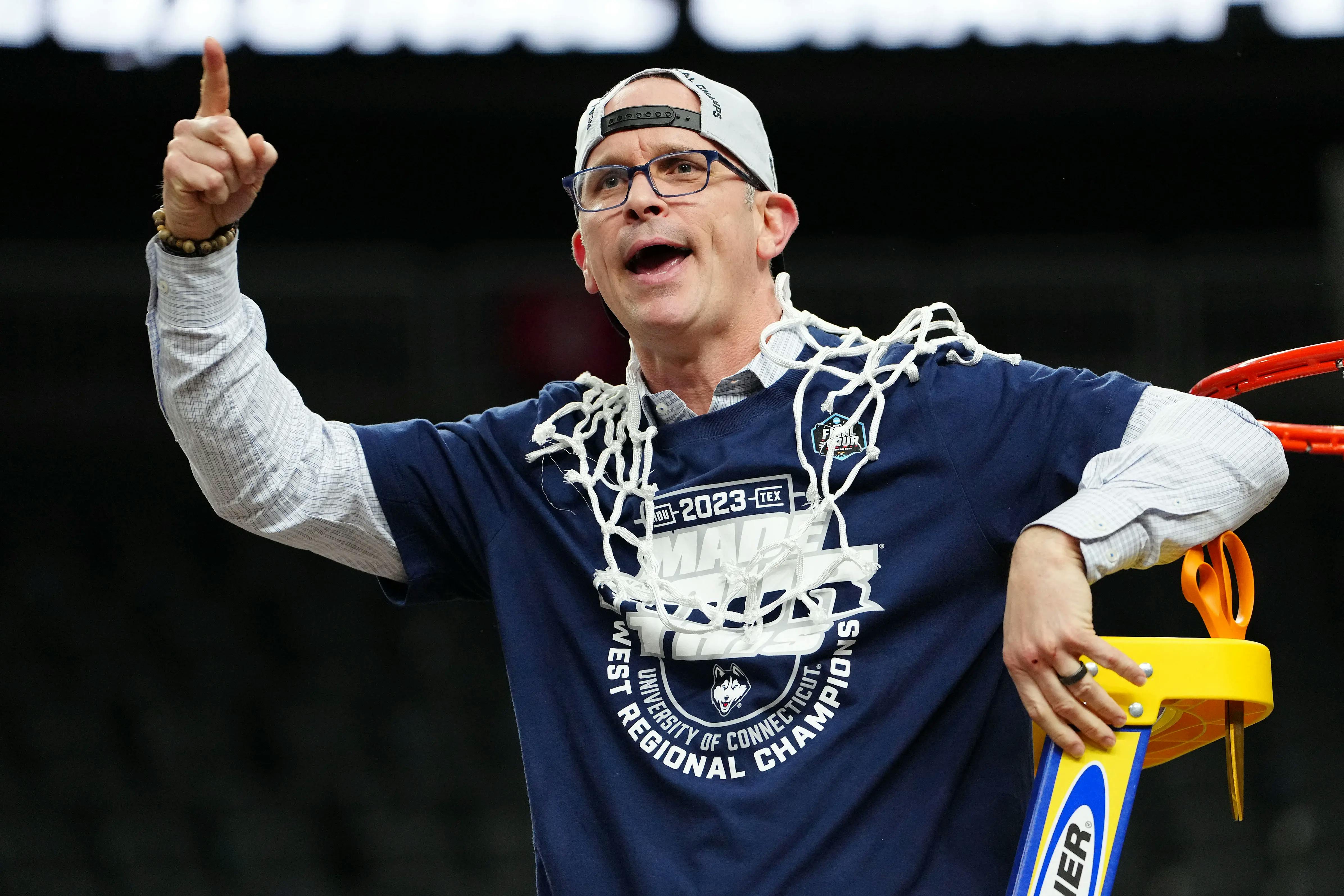
Two of UConn Coach Dan Hurley’s Key Defensive Drills
- By Grant Young
All coaches surely understand that instituting good defensive basketball drills in the middle of a season can significantly impact a team’s overall success.
Implementing robust defensive drills can help refine individual skills, foster teamwork, and build a resilient defensive mindset. One of the key benefits of addressing defensive tactics mid-season is the ability to identify and rectify weaknesses. Teams can assess their defensive performance in games, pinpoint areas for improvement, and then work on those specific aspects during practice.
Practicing defensive drills enhances players’ individual skills such as footwork, positioning, and anticipation. These skills are vital for creating turnovers and disrupting the opposing team’s offensive flow. As players become more adept defensively, they gain confidence, which can translate into better overall performance as they continue to build cohesion as a unit.
A team that communicates well defensively can adapt and adjust strategies in real time, making them much harder to beat. Not to mention how incorporating drills in the middle of the season also reinforces a defensive mentality. Teams can build a culture where defense is valued as much as offense. Encouraging players to take pride in their defensive efforts can transform how they approach games, increasing their determination to work hard on that side of the ball.
The impact of instituting defensive drills in the middle of a season can be profound. As teams prepare for crucial stretch moments in the season, focusing on defense can be the difference between success and failure.
But all of these benefits are only realized if the right drills are chosen by coach. Therefore, there’s a lot of pressure to find the correct defensive drills for your team. However, whose blueprint is better to follow with UConn Huskies men’s basketball head coach Dan Hurley?
Coach Hurley is the first back-to-back champion in UConn history and third in the last 40 years of the NCAA Tournament after his Huskies won the 2023 and 2024 NCAA National Championship.
Hurley was named the 2024 BIG EAST Coach of the Year after guiding the Huskies to a league-record 18 wins in conference play. The Huskies won their 11th regular season BIG EAST title before going to Madison Square Garden and winning their eighth BIG EAST Tournament crown. Connecticut went into the NCAA Tournament as the number one overall seed, a program-first, and won its six games by a combined 140 points, an NCAA Tournament record. He earned the 2024 BIG EAST Coach of the Year and Naismith College Coach of the Year.
In his ‘Dan Hurley - UConn Defensive Principles’ clinic, Coach Hurley dives into the x’s and o’s and covers the core principles of team defense including topics such as pressure, transition drills for practice, scrambling and rotating, 4 & 4 Shells, cutters, and much more.
We’ve pulled two of his defensive drills that you can bring to your basketball team’s next practice.
Defensive Principles Drill
One drill that coach Hurley swears by is what he calls the Defensive Principles Drill, which he believes encapsulates all of the core defensive pillars he wants his UConn teams to employ.
The drill is a five-on-five, with the offense passing the ball along the perimeter until a coach provides a command. Once the coach says a word like “Touch,” the defender guarding whoever has the ball is going to run and touch the nearest line (either sideline or half-court) while the offense goes live.
This will immediately force the defense to adjust and provide help, as it simulates a defense getting beat off of the dribble. The play then continues live from there, while the offense looks to capitalize on the one-player advantage.
Another command that a coach could potentially say would be “Drop”. When this command is issued, whoever has the ball will drop it where they stand, and the team on defense will go to transition offense.
The third potential command a coach will yell is “Change”. This is where whoever has the ball when this command is issued will hand the ball to their defender and the offense and defenses will switch while remaining in the half court.
However, the key here is that the players who are on offense but then transition to defense can’t be guarding the same player who was guarding them, which will require communication.
Hurley goes on to explain to run this still for 12-15 minutes, utilizing all of the different commands. He specifically likes using it in March (during the postseason) to keep his players in shape and ready for whatever action may occur in a game.
Transition Defense Drill - Part 1
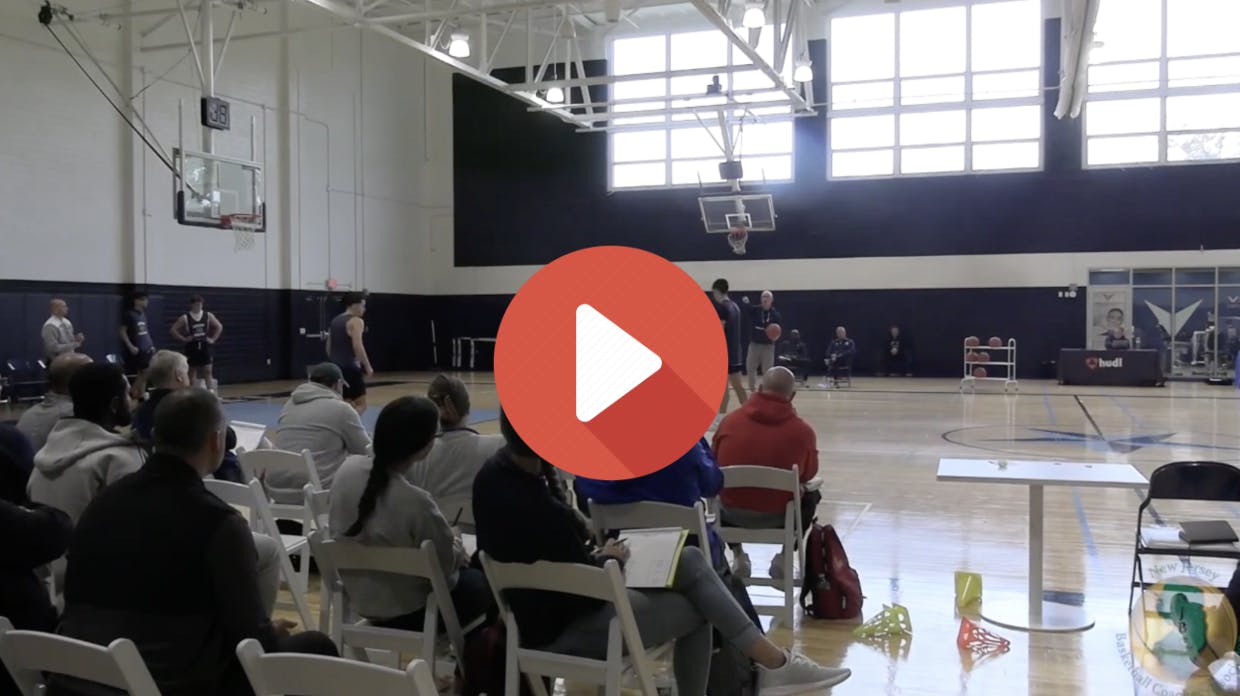
Another one of Coach Hurley’s most important drills is his Transition Defense Drill, which he uses as a six-minute drill that will test and enhance a team’s conditioning while also implementing valuable reps in transition defense and communication.
The drill begins with three players on offense with a ghost defense in the half court, running some simple offensive scheme that’s true to your offense strategy.
From there, another three-man team will come running up the court. The previous team will become defenders while the offense executes a dribble-handoff offense. At this point, the drill will become live.
Then the two teams will each get a possession (in full court) before getting subbed out by two other three-man teams.
This drill is effective because it forces the team who quickly becomes defenders to communicate with each other and get used to making a quick transition from offense to defense, even when the offense is bearing down on them.

